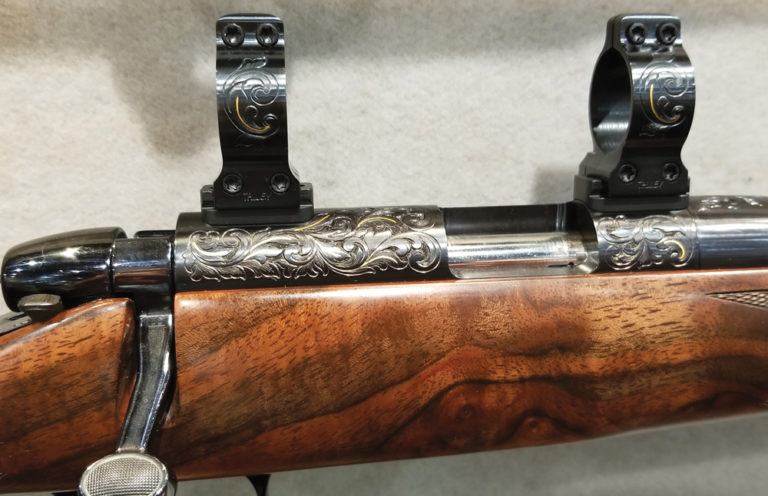
Custom guns are beautiful to behold, but they might also be one of the best firearm investments. Here’s why.
Why custom guns are worth the money:
- Create an enhanced firearm potentially more accurate.
- Added unique embellishments particular to that gun.
- Enhance the overall aesthetics of a firearm.
- Potentially create a gun that will increase in value over time.
Italy’s Trompia Valley, also known as the “Valley of the Gun,” has been the heart of European firearm manufacturing since the 16th century. The massive iron forges that once lined this valley have been replaced with modern, high-tech factories, and companies like Rizzini and Beretta rely on precision CNC machining equipment to produce their products. This modern technology allows manufacturers to keep tolerances tight and costs relatively low, a real win for gun buyers.
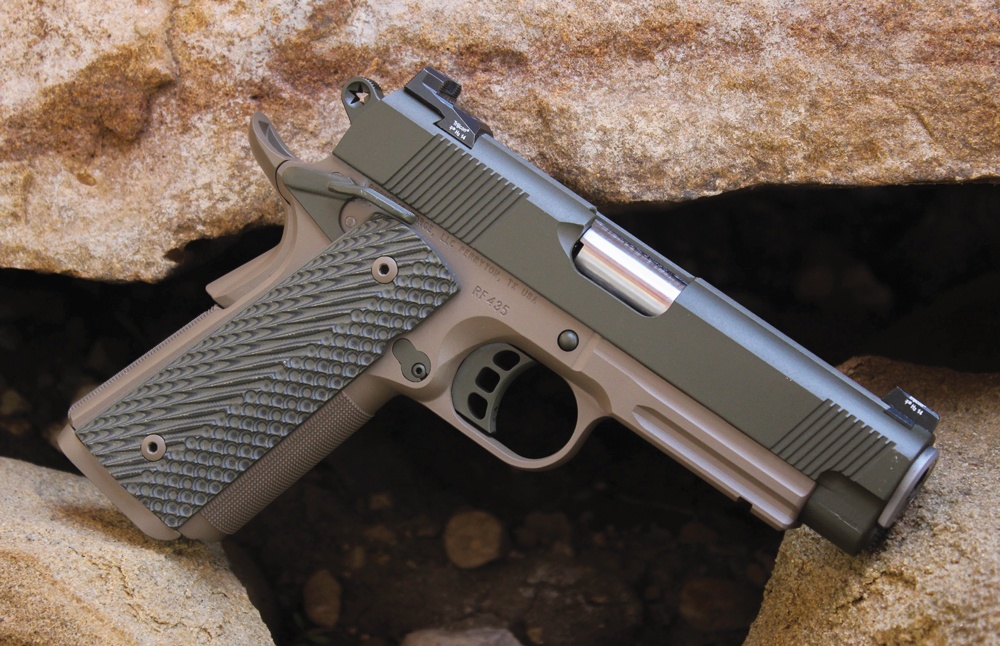
Carlos
But not every firearm that comes from the Valley of the Gun is strictly a product of high-tech machining. When I visited the Fausti manufacturing facility in the Trompia Valley, I noticed that the factory was divided into two halves. The southern half of the factory was filled with rows and rows of bulky white CNC machines that churned out shotgun parts at a rapid pace. The northern half of the factory, though, is occupied by a group of Italy’s best custom gun makers and engravers. Every Fausti gun begins life in the southern portion of the factory, but the brand’s Boutique guns — which are custom-built to each customer’s specifications — spend a few weeks or even months in the northern half of the factory where each gun is hand-fitted, oil-finished and engraved. The engraving alone can take up to 700 hours per gun, but the finished product is a spectacular firearm that’s built from the ground-up to meet the needs and wants of the customer.
If you appreciate fine guns, it’s hard not to lust after a fine custom firearm. When you combine detailed machine work with hand fitting and the finest materials, the final product is spectacular. But have you ever considered actually purchasing a custom gun? Sure, they’re more expensive than production firearms (all that hand fitting and one-off detail work comes at a price), but the end result is a gun that suits your wants and needs perfectly. And, in some cases, custom guns are actually a very solid investment.
What You’re Getting With A Custom Gun
Custom guns require extra attention and labor for production and, in many cases, the component parts that are used in the assembly of a custom gun are of a higher grade. Those are the primary reasons that custom guns cost more than production guns. It’s important, however, to know what you’re paying for when you purchase a custom gun. If you’re buying a beautiful hunting rifle with express sights, a grade “V” walnut that’s been cut to fit and detailed engraving, that doesn’t mean that it will shoot any more accurately than the stock production rifle upon which it was based. Very accurate rifles might have aftermarket barrels, blueprinted actions, custom trigger jobs and the like, but that doesn’t always mean they’ll be beautiful.
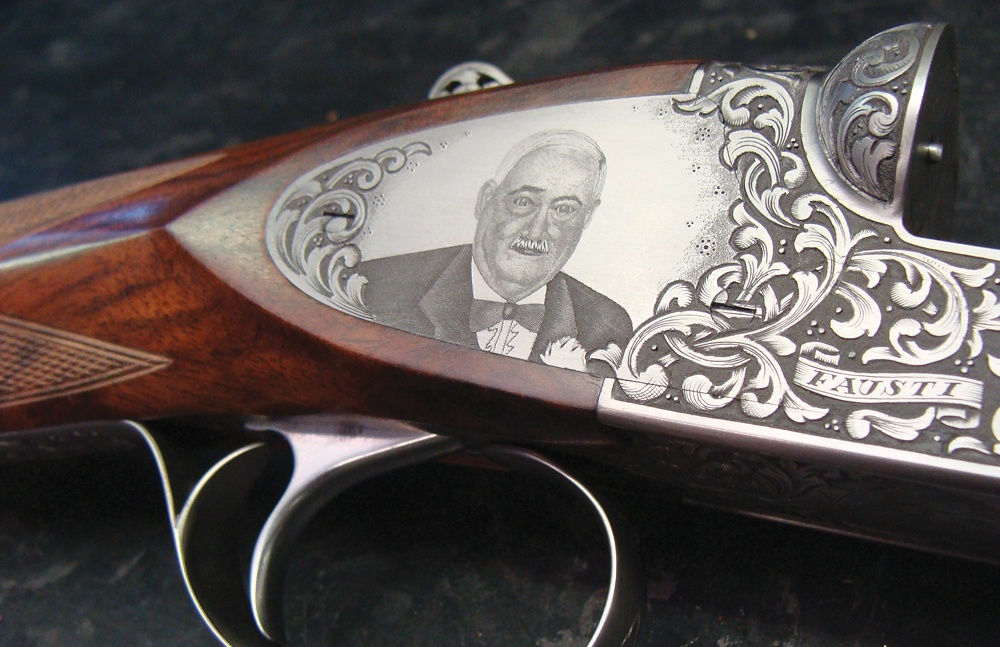
Buying a custom gun requires spending some time considering the end use for the firearm and balancing what your wants and needs are with your budget. For instance, custom gun builders have used affordable Remington and Howa actions as the basis for custom guns for years, and the resulting guns that I have encountered have shot well. Saving a few bucks on the action allows them to add upgrades to the rifle. In fact, upgrading your existing hunting rifle can be pretty simple. Sometimes buying an aftermarket stock, having a gunsmith install a better barrel, truing the action or bedding your rifle are all affordable steps that can dramatically improve accuracy.
The market for custom pistols is as large as the one for long guns, and there’s a noticeable difference between the custom guns I’ve tested from Republic Forge, Nighthawk, Ed Brown and others when compared with production guns. For starters, hand-fitting and polishing work means that the gun operates with supreme precision. Custom pistols have slides that move as if they were riding on ball bearings. Everything fits tight. In some cases, you’ll need to spend some time breaking in the gun to loosen it up so that it operates perfectly. The majority of custom guns are based on 1911 designs, but there is a growing contingent of shooters who are customizing their polymer carry guns with special finishes, upgraded sights/barrels/triggers, slide cutouts and so forth. Whether you’re looking for something stunning and exclusive or practical and affordable, you can touch up your sidearm to the degree you see fit.
There’s a very simple axiom when it comes to pricing walnut for stocks: The prettier it is, the more it costs. And the very prettiest walnut stocks can be very, very expensive. In many cases, these stocks will be cut to fit, and there will be a tremendous amount of handwork, including checkering and finishing work, which will increase the price even more. But a beautifully crafted stock with exceptional color is a true treasure, a combination of natural and human handiwork that serves a practical purpose — so long as you’re willing to risk nicks and mars when you take it to the field. If you aren’t willing to pay for wood or want something that’s more durable, then synthetic stocks are on option. And, increasingly, there are more options with custom synthetic-stocked guns than before; Remington’s Custom Shop offers hand-painted stocks to customer specifications.
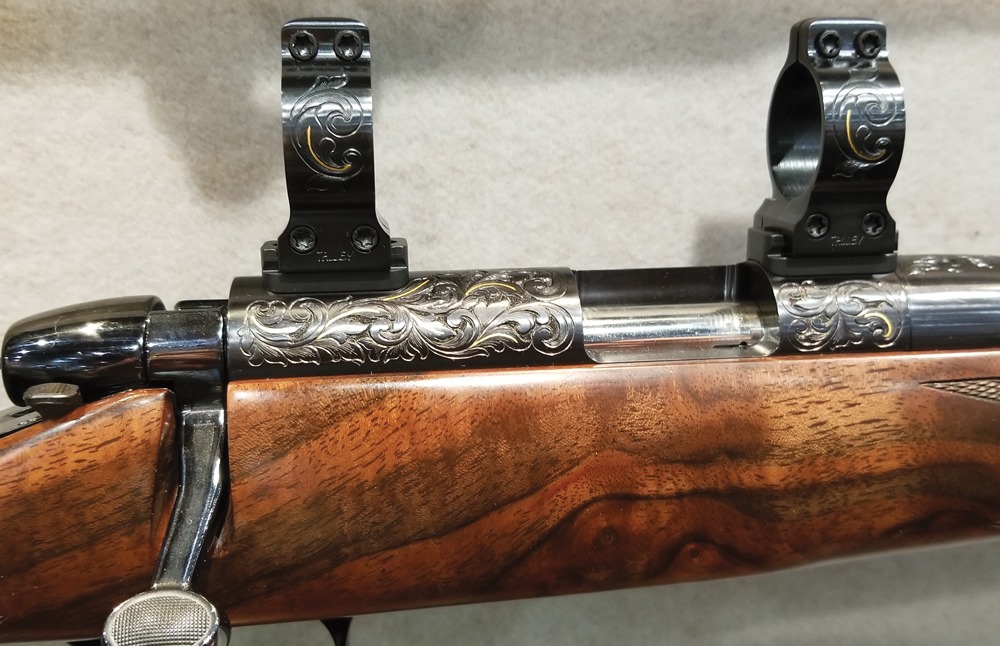
Besides attention to detail and material upgrades, you’re also paying to have exactly the gun you want. Not one that’s close, not one that’s similar; a gun as you would design it. And when you choose a good builder, the care and attention shine through.
The Custom Process
The Safari Club International Convention in Nevada serves as a stage for custom gun builders to show off their products. One of the largest custom gun shops belongs to Remington, which also incorporates Marlin, Dakota Arms, Nesika and other companies.
“Every custom gun starts with a conversation,” says Carlos Martinez of the Remington Custom Shop. “Not all of our customers are gun aficionados. They may not know why we blueprint actions. But we can sit down with them and discuss what they’re looking for in a gun.”
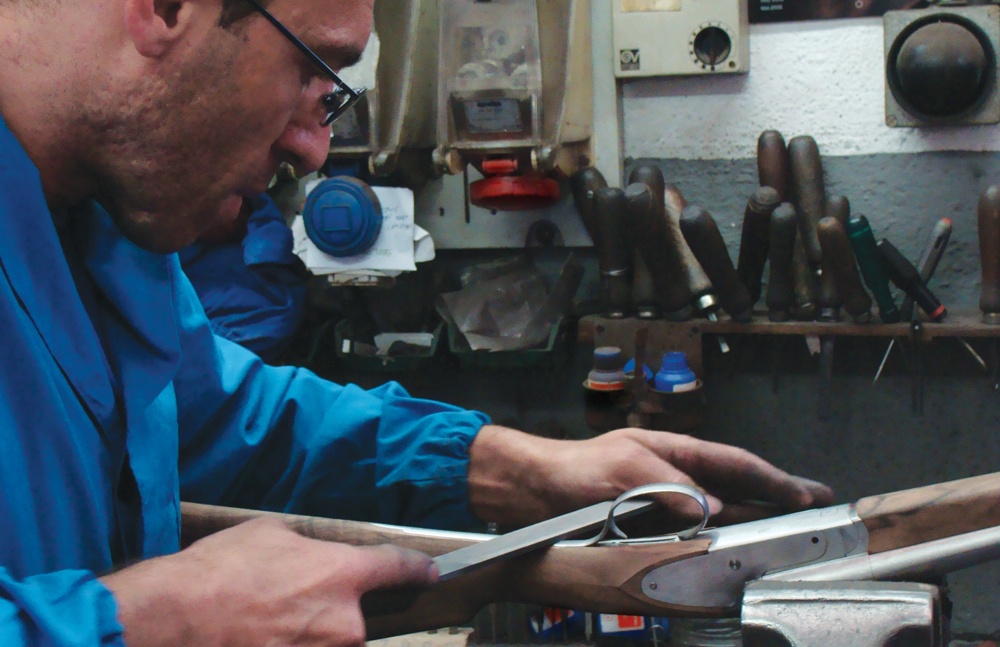
Carlos said that a qualified custom builder could also talk a customer out of potential mistakes. If you have your heart set on building a .338 Lapua with an 18-inch barrel, the team from Remington will build that gun for you, but they’ll also tell you why that’s a bad idea. Ultimately, the purpose of a custom gun is to give the buyer exactly what they want within budget constraints. But it can help to have someone to talk to and walk you through the decision.
How long does it take to see a finished gun come down the line? That depends on the builder you choose and how many boxes you check. The Fausti guns described in the opening of the article might take several months or a year depending upon the detail on the engraving. A built-from-scratch custom gun from a very busy builder might take a year or more. In many cases, though, you can have a custom gun built in six months or less. But it’s important to speak with your builder and know exactly when your firearm will be in your hands. If you’re designing a custom rifle in July to use on an elk hunt the following October, you’re on a pretty tight schedule, and you can bet that if I were in that position I’d have a backup rifle zeroed and waiting.
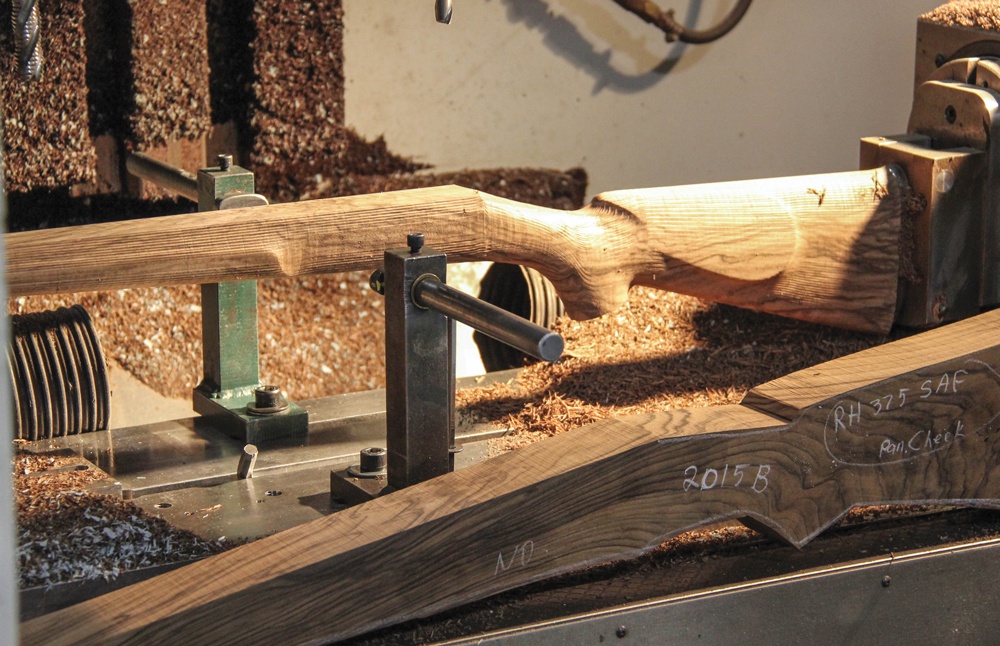
Lastly, you need to determine what you are getting and how much you are paying. More than one shooter has agreed to purchase a rifle at a certain price and then, over the course of the build, they have agreed to additional upgrades that end up driving the price higher than expected. Then, you need to find a custom builder with a solid reputation. Hopefully that’s someone who has built a number of guns and can put you into contact with some very satisfied owners — after all, you can buy a well-built, accurate production gun for $1,000, so if you’re paying custom gun prices, you need to be certain of what you’re getting. Probably the single biggest point of contention is group size, and when I talk to those who have experience with custom guns — both as buyers and sellers — they agree that this is a sticking point. Is there an accuracy guarantee, does it cover the caliber you selected (some accuracy promises don’t include big-bore calibers), and is there a certain ammo specification?
Semi-Custom
There are a number of companies that can offer both complete custom guns and semi-custom packages that don’t offer a blank-slate approach to gun building but that provide you with a number of options to build a gun that suits you. Many companies have in-house Cerakote shops, and in some cases, you’ve got the option to add custom touches to a firearm without spending a lot of money. E.R. Shaw in Pennsylvania does just that, offering a number of stock, finish, caliber and barrel length options for their rifles while keeping the price at or just above what you’d pay for some factory guns, and accuracy is superb. Likewise, companies like Weatherby, Nosler, Remington, CZ-USA, Benelli and Montana Rifle Company have in-house custom shops that allow them to make some minor changes to their guns. Many of these aren’t full-out ground-up builds, but if these companies have rifles or shotguns you like and you want to make a few minor touches, that’s not a problem.
Are Custom Guns Really Worth The Money?
Guns are investments, and just like any investment, there are winners and losers. But of the handful of custom guns in my gun safe, I feel my money was well spent. I got the gun I wanted, a firearm perfectly suited to my needs, and even though I paid a bit more for them, I know I can get most of my money back.
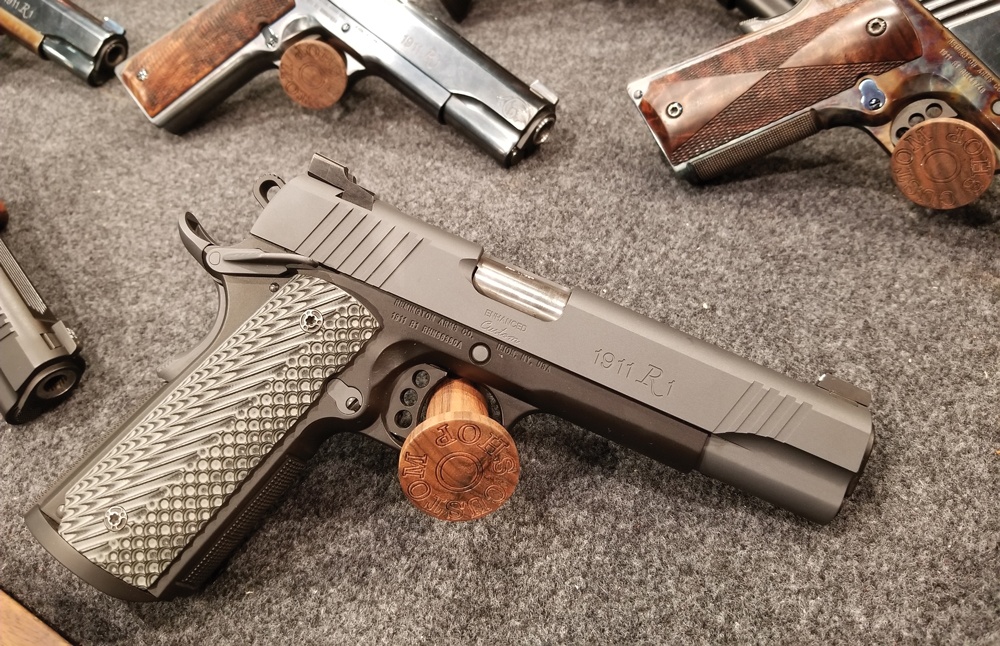
If you’re buying one custom gun — your dream gun — you don’t necessarily need to be so concerned with ROI. After all, you’re probably going to keep the gun the rest of your life, and there’s a certain intrinsic value to handing down a one-of-a-kind firearm to the next generation of shooters. If, on the other hand, you’re buying a custom gun that you might well part with, then you’ll need to be certain that the gun is marketable in the future. My Republic Forge 1911 pistol is one that I plan to keep, but because it has widespread appeal — a Commander-length .45 with lots of nice touches that make it fun to shoot and beautiful to behold — I know that it would be attractive to buyers if I ever decided to sell (which I won’t). Generally speaking, the better the work, the more eye-catching the gun and the more widespread appeal it has, the easier it will be to get a solid return on investment.
Ultimately, though, a custom gun is about your appreciation for a firearm maker’s skill and your desire to own your own “perfect gun.” Whether you’re looking for the ultimate mountain rifle, the ultimate competition shotgun or the ultimate conversation piece for your next backyard barbecue, you won’t have to settle for someone else’s idea of the ideal gun.
Editor's Note: This article originally appeared in the April 2018 issue of Gun Digest the Magazine.

Next Step: Get your FREE Printable Target Pack
Enhance your shooting precision with our 62 MOA Targets, perfect for rifles and handguns. Crafted in collaboration with Storm Tactical for accuracy and versatility.
Subscribe to the Gun Digest email newsletter and get your downloadable target pack sent straight to your inbox. Stay updated with the latest firearms info in the industry.

![Best Concealed Carry Guns In 2025 [Field Tested] Wilson Combat EDC X9S 1](https://gundigest.com/wp-content/uploads/Wilson-Combat-EDC-X9S-1-324x160.jpg)


![Best 9mm Carbine: Affordable PCCs [Tested] Ruger Carbine Shooting](https://gundigest.com/wp-content/uploads/Ruger-Carbine-Shooting-100x70.jpg)
![Best AR-15: Top Options Available Today [Field Tested] Harrington and Richardson PSA XM177E2 feature](https://gundigest.com/wp-content/uploads/Harrington-and-Richardson-PSA-XM177E2-feature-100x70.jpg)

I bought a Harry Lawson custom rifle recently at a pawn shop for $600,its built on a commercial Mauser action in 30 06 its designed as a Mannlicher clone with spoon bolt handle,full length 24″ barreled stock,custom lever lock on the mag plate straight six power scope all sighted in but its to pretty to take out in the brush,its got the nicest walnut stock I’ve ever seen and fit polish and finish are beyond description. I know this gun had to cost thousands to have built but it sat in the shop for over 9mo.so the owner said he wanted to get out from under it to make room for another gun so he sold for way less than its real value.Are custom guns a good value? If you’re buying they are!
I disagree with the author. I have taken a bath when selling a custom gun. The first problem is there is no blue book value on your custom gun so the buyer really has no idea what it is worth except the worth of the gun before you had it altered and remember what is the “cats meow” to you will be most of the time a frankenmonster to the prospective buyer. Contrary to popular belief after having guns “customized” and after shooting also other peoples customized guns the accuracy difference is either zero or so little it does not justify the cost. Only a skilled competitive shooter would notice the difference and it is worthwhile if you are in competition but for the average “weekend blaster” or “once a year hunter” its a total waste of money as he has not the skills to notice any difference in accuracy. Its far better to invest in an old fashioned wood and mirror blued gun that will go up and up over the years invalue and has a solid “blue book value” than to alter any of the sub-standard cast iron, plasticy and stamped sheet metal ilk being vomited out by today’s gun manufactures. And remember if you are actually going to hunt with it just buy a used weapon at way less cost or if you must a new Walmart plasticky and stamped sheet metal special that you will not devalue if it gets beat up or rusted up in the rough weather of hunting. Its worth nothing the day you buy it and even less than nothing the day you get rid of it. And it probably has more than enough accuracy for minute of deer. Walmart hammers work and you can use modern guns for the same purposes.